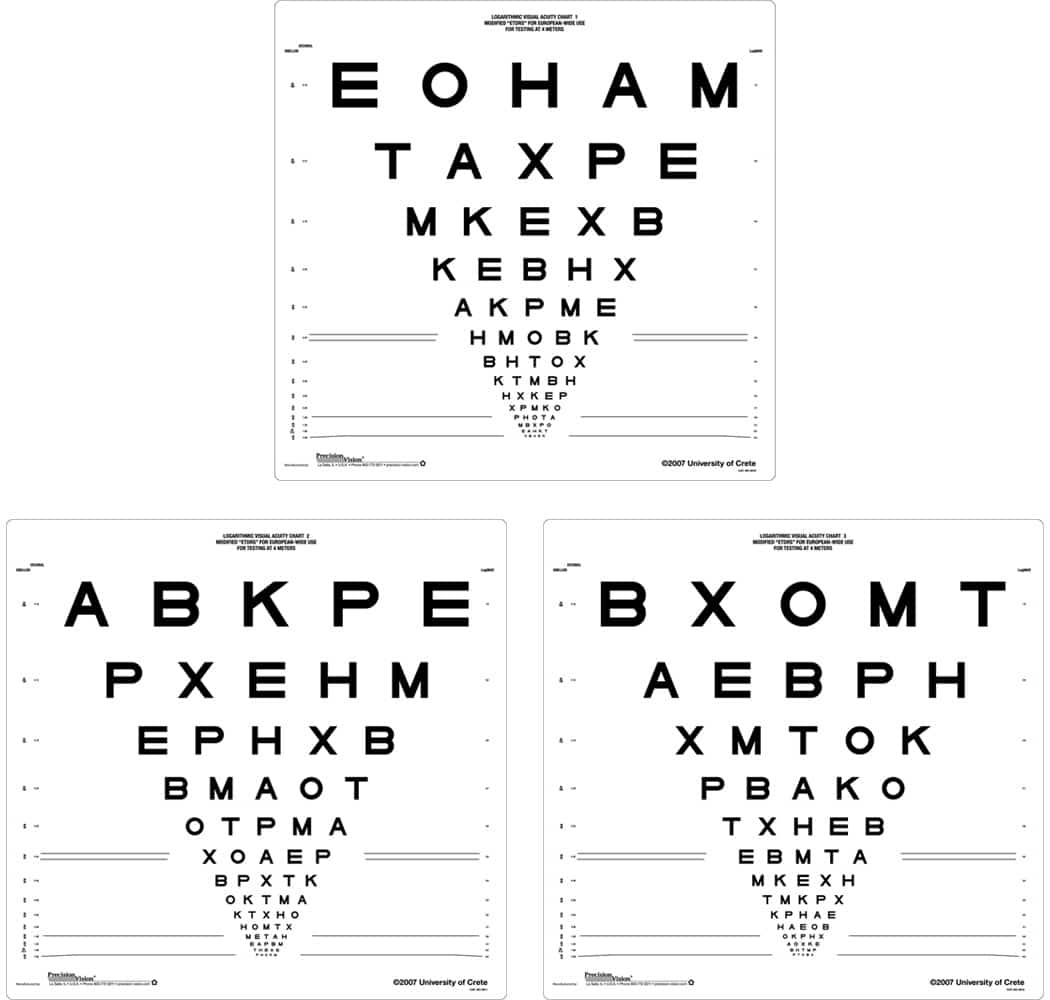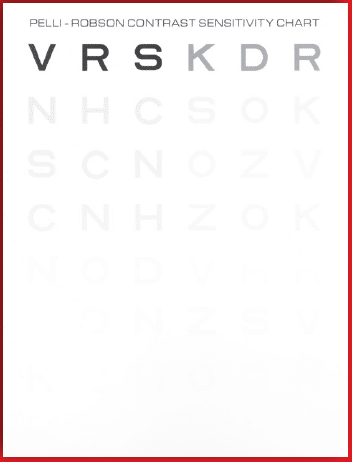
Patti Pics™ Encourages Low Vision Students to Learn and participate in testing comfortably – Precision Vision
IN THE NEWS
At Precision Vision, we love innovation and advancement in the field of vision testing, which is why this month’s eNewsletter is especially significant. We are extremely pleased to share a story with you from the Perkins School for the Blind in Watertown, Mass. While one of our main focuses is manufacturing the tools to measure visual acuity, we know it’s you – the practitioners, clinicians and teachers in the field – who truly deserve the credit for helping patients and students with low vision reach their full potential. Check out our featured article below.
Patti Pics™ by Precision Vision Encourages Low Vision Students to Learn and Participate in Testing Comfortably
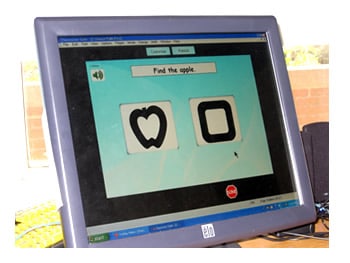
Linda Ahern Roth, a teacher of the Visually Impaired in the Secondary Program at Perkins School for the Blind, adapted our Patti Pics™ collection of charts to prepare students — ranging in age from 16 to 22 years — for low vision testing. Linda started using the Patti Pics symbols in the spring of 2009 to create training materials for low vision students who also have low-functioning cognitive abilities, comparable to kindergarten-age children.
Previously, Linda had developed activities with another popular pediatric test (which show pictures of such objects as a circle, house and apple). When the Low Vision Department at Perkins switched to Patti Pics, Linda decided that the students needed consistency. She requested that Precision Vision allow her to use the Patti Pics optotypes for the development of computer activities.
“The problem we encountered in low vision testing was that the students didn’t actually know the names of an apple or a house, for example,” said Linda. “They couldn’t identify them because they were never taught them. As part of our solution, I thought I’d start presenting them on the computer to teach them the names first. We could not get proper vision testing accomplished without the students knowing the names of the symbols presented to them.”
As a computer specialist at the school, Linda often experiments with different techniques that provide accurate, measurable results while keeping the students interested. In 2009, she adeptly developed three separate computer-based activities featuring Precision Vision’s Patti Pics. This was achieved by scanning the basic images electronically, then creating activities with the “Classroom Suite” authoring software by IntelliTools®, Inc. The IntelliTools® program also allows the user to alter the images at any time.
TESTING WITH PATTI PICS™
Find It.
In the first test (see “image 1”), two pictures are presented on the screen. The computer says “Find the <blank>” (ex: “Find the Apple”; “Find the Square”). The student then presses the symbol on the touch screen. This activity is used to familiarize the students with the symbols and their names.

Name It / Match It.
In another test (see “image 2”), the student is presented with only one symbol on the screen. They can either:
a) press a switch to hear the name of the symbol; or
b) match the symbol to the correct one on a hard copy with an array of symbols in front of them.
Linda can also turn off the computer voice to test whether the student is able to verbally identify the symbol.
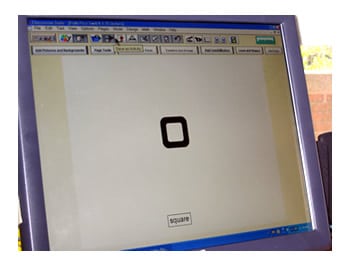
Press It.
In a third activity, the student is presented with one symbol at a time on the computer screen. He/she is asked to find the same symbol on an IntelliKeys alternative keyboard (a programmable, flat keyboard) by IntelliTools® that enables users with physical, visual or cognitive disabilities to easily type, enter numbers, navigate on-screen displays, and execute menu commands. Once the student makes a selection, the computer tells them if they are correct. If they are not, they are asked to try again.
Linda says a huge benefit of this activity is that a teacher can put pictures on the screen of anything they input to the computer. The computer can be prompted to say “find this one” (when a star is presented, for example), and then the student has to choose from an array of symbols on the keyboard.
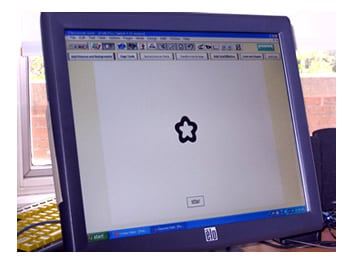
“We used this method in a low vision assessment with one of my students recently. The ophthalmologist felt that he got more accurate testing results than he had in the past. We can also use this method for distance testing by seating the student away from the computer. This would be particularly helpful if they couldn’t verbally say the answers,” said Linda.
She adds: “Going to a clinical setting can be upsetting at times for these students, but a classroom makes them feel more comfortable. For kids with limited vision, we need something very simple on the screen. I want to thank Precision Vision again for allowing me to use the Patti Pics symbols to create these activities for my students. I love that I can continue to fine-tune these activities at any time by changing the sizes of the presentation and more.”
Currently, Linda has a series of tests at 1 ¼ inches, 1 5/8”, 3 inches and at 4 ½ inches. Her long-term goal is to continue to be able to use the symbols for actual vision testing.
RESULTS
By implementing this effective testing system, Linda said the results have been astounding.
“My goal was to keep the activities visually uncluttered, and I feel that it has really helped some of the kids. A number of our students who didn’t participate much before have been able to participate more in the vision testing simply because they know the names of the symbols now. Learning the names has been the key here. In addition, getting them to focus on one particular picture and select the right one of the five Patti Pics has proven to be an effective method of testing.”
For more information about Patti Pics™ by Precision Vision, please click here.
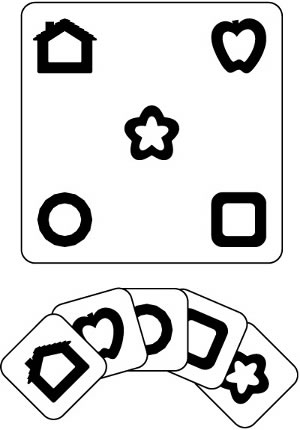
These charts provide non-verbal or shy children the opportunity to respond by pointing or matching. Patti Pics symbols are easily recognizable for children. Each optotype is calibrated to Snellen standards and is reliable and accurate for testing. Patti Pics vision charts are also great for testing pediatrics. Not only do the flash cards help the child to respond without a verbal answer, but testing is more accurate and reliable. Also, recording vision results is easier with no guessing about answers.
PRODUCT PROFILE
Patti Cake™ Small Fixation Paddle
This small Patti Cake fixation paddle features the Patti Cake face and other well known objects like a bird for infant stimulation. Because infants response to faces better than random symbols or shapes, the small fixation paddle is great for vision testing in infants. The fixation paddle is also shaped in a small oval for doubled use as an occluder. These multiple features help in the clinical testing process of pediatrics.
Peek-a-Boo Patti™ Low Contrast Test
This Low Contrast Test relies on the idea that children and infants respond better to faces than to random symbols or shapes. They use a Peek-a-Boo Patti shape to hold the attention of children. Each card uses the same shape and is printed in six different contrast levels. Testing is quick and easy. Peek-a-Boo Patti cards are great for testing infants and those with mental disabilities. Great for clinical testing.
CONTACT US
Share Your Stories With Us!
Precision Vision® wants to hear your stories. Tell us how you are impacting the industry. Do you have an interesting story to share about a Precision Vision® product? Contact us and we may use it in a future newsletter.





